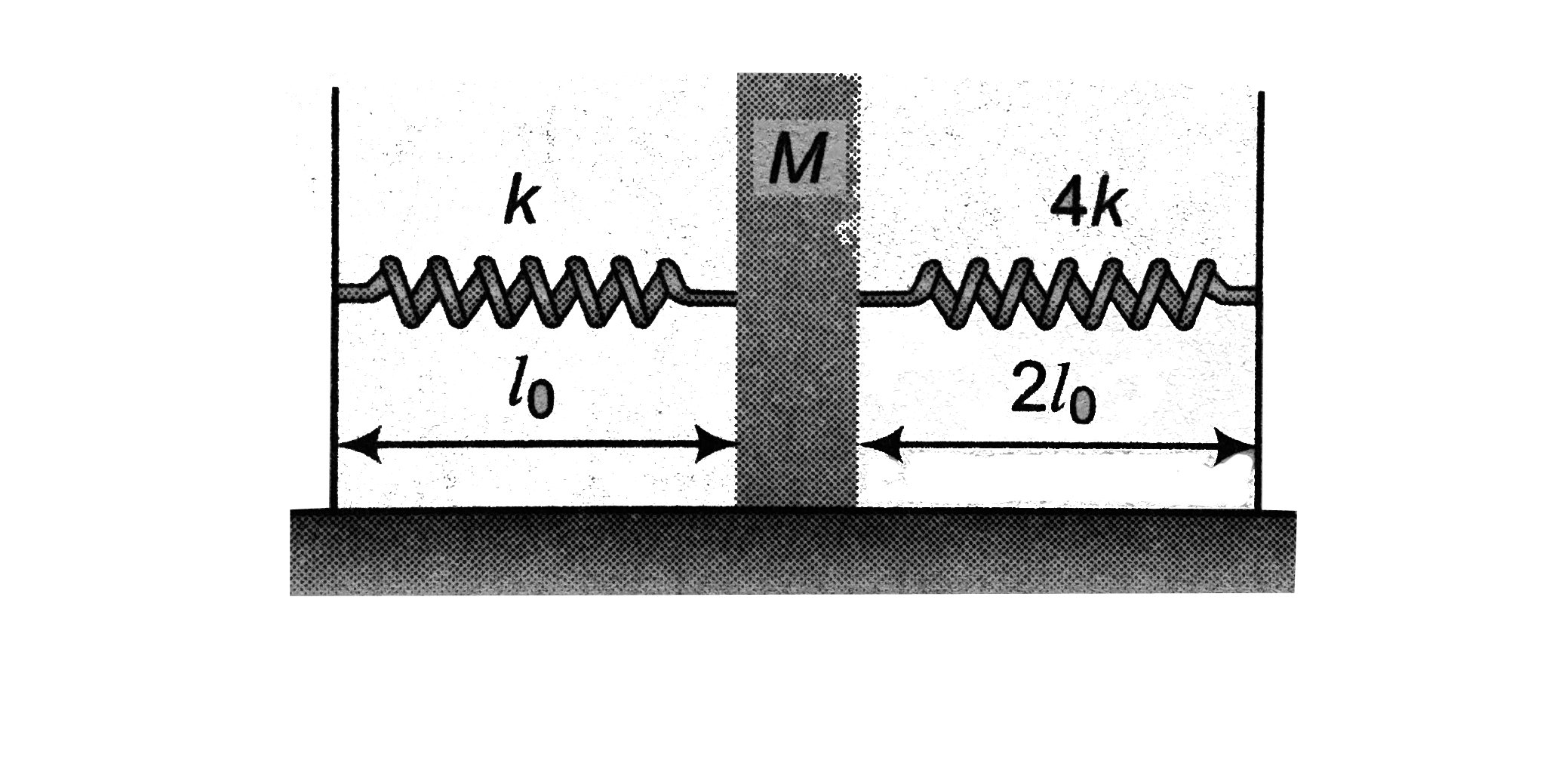Passage II) Two identicla blocks P and Q have masses m each. They are attached to two identical springs initially unstretched. Now the left spring (along with P) is compressed by A2 and the right spring (along with Q) is compressed by A. Both the blocks are released simultaneously. They collide perfectly inelastically. Initially time period of both blocks was T.

The amplitude of combined mass is
A4
A2
2A3
3A4
The correct Answer is:A
Step by step video, text & image solution for Passage II) Two identicla blocks P and Q have masses m each. They are attached to two identical springs initially unstretched. Now the left spring (along with P) is compressed by A/2 and the right spring (along with Q) is compressed by A. Both the blocks are released simultaneously. They collide perfectly inelastically. Initially time period of both blocks was T. The amplitude of combined mass is by Physics experts to help you in doubts & scoring excellent marks in Class 11 exams.
Updated on:21/07/2023Similar Questions
बल नियतांक K की एक स्प्रिंग व दो ब्लॉक क्रमशः m तथा M द्रव्यमान के , चित्रानुसार व्यवस्थित है। ब्लॉक को बायीं और दबाकर स्प्रिंग में x मी संपीडन उत्पन्न किया जाता है। स्प्रिंग को मुक्त करने परm के दोलन का आयाम होगा -
View SolutionA block of mass m is initially moving to the right on a horizontal frictionless surface at a speed v. It then compresses a spring of spring constant k. At the instant when the kinetic energy of the block is equal to the potential energy of the spring, the spring is compressed a distance of :
View SolutionA spring is connected between two blocks as shown in the diagram. Initially the blocks are held stationary and suddenly they are released. Find the ratio of maximum kinetic energy with spring compressed the block of mass m to that of mass 2m.
View SolutionTwo identical blocks P and Q have mass m each. They are attached to two identical springs initially unstretched. Now the left spring (along with P) is compressed by (A/2) and the right spring (along with Q) is compressed by A. Both the blocks are released simultaneously. They collide perfectly inelastically. Initially time period of both the block (assuming each block was individually connected to one spring) was T. The amplitude of combined mass is
View Solution6kg तथा 3kg द्रव्यमान के दो ब्लॉक 2π2N/m स्प्रिंग नियतांक की द्रव्यमानहीन स्प्रिंग के दोनों सिरो से जड़े हुए हैं। यदि स्प्रिंग संपीडीत की जाती है तथा घर्षणरहित क्षैतिज सतह पर छोड़ी जाती है तो प्रत्येक ब्लॉक का आवर्त काल (सैकण्ड में) ज्ञात करो।
View SolutionA block of mass M is kept on a smooth surface and touches the two springs as shown in the figure but not attached to the springs. Initially springs are in their natural length. Now, the block is shifted (l0/2) from the given position in such a way that it compresses a spring and released. The time - period of oscillation of mass will be

View SolutionTwo blocks of masses m_(1) and m_(2) are kept on a smooth horizontal table as shown in figure. Block of mass m_(1) (but not m_(2) is fastened to the spring. If now both the blocks are pushed to the left so that the spring is compressed a distance d. The amplitude of oscillatin of block of mass m_(1) after the system is released is
View SolutionPassage II) Two identicla blocks P and Q have masses m each. They are attached to two identical springs initially unstretched. Now the left spring (along with P) is compressed by A2 and the right spring (along with Q) is compressed by A. Both the blocks are released simultaneously. They collide perfectly inelastically. Initially time period of both blocks was T.

The time period of oscillation of combined mass is
View Solution

